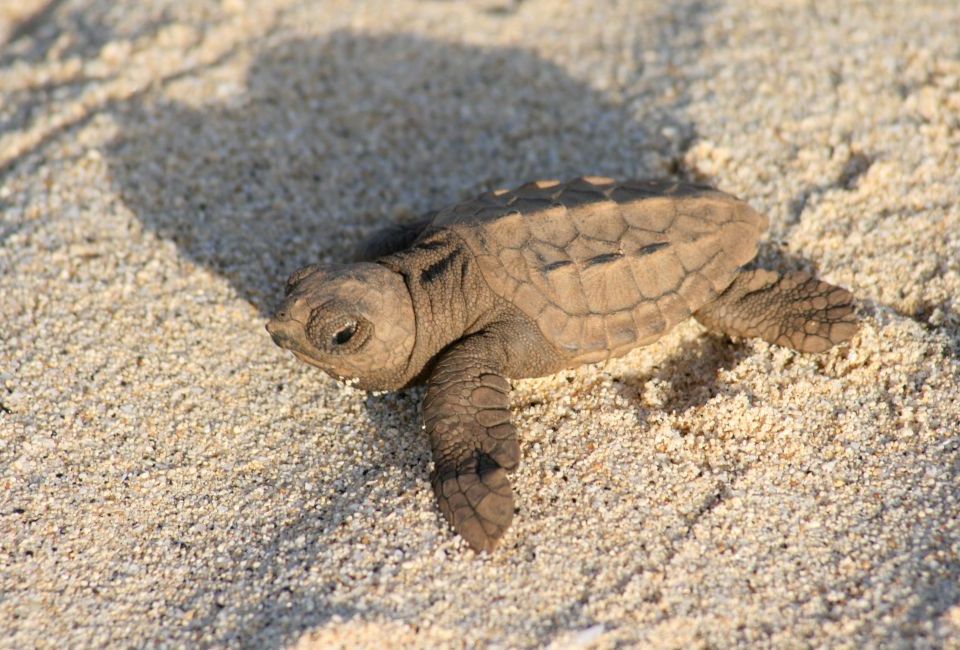
An app will enable users to create alerts for the nesting of sea turtles on the coasts of the Iberian Peninsula this summer
The number of nests of loggerhead sea turtles (Caretta caretta) on the coasts of the Iberian Peninsula has been increasing in recent summers. 13 events were recorded between June and September 2017, and 10 were located last year, including turtle tracks, females, nests with eggs and recent hatchlings that were trying to reach the sea. Knowing what to do in the presence of turtles is essential for ensuring that these animals are treated properly, and their life is not interfered with. That is the aim of the Caretta a la Vista information project, by the University of Vic - Central University of Catalonia (UVic-UCC). Now the people running the project have just created an app for communication between members of the public who notice breeding activity, and the experts and government bodies responsible for dealing with it.
Improved protocols and shorter reaction times
The mobile application (currently available for Android) aims to "improve the action protocols and shorten the reaction time between the alert and action being taken, which is crucial for ensuring respect for the turtles' activities," explains Elena Abella, one of the coordinators of the project, an expert in sea turtles and a member of the CT BETA (Biodiversity, Ecology and Technology and Environmental and Food Management Technology Centre) at the UVic-UCC. That is why the key to its success is work coordinated with local and regional governments as a tool for identifying and managing these events.
The tool is divided into three main areas: the first allows the user to send an alert instantly with just one click in the app, if they see a track, a turtle, a nest or hatchlings. The application automatically contacts the 112 emergency telephone number and launches the stipulated management protocols. The second area provides clear and practical advice on what to do if the user believes these animals are nearby. It also lists the various groups of organised volunteers that patrol the beaches, in case the user wants to contact or work with them. Finally, a learning section provides educational materials about the nesting process and how to recognise tracks and identify nests, among other topics. The application will be operational throughout this campaign, but it is expected to be fully implemented as an event detection and management tool by the end of 2019.
This resource is one of various materials which the Caretta Vista project has created since its inception in 2016, in order to disseminate knowledge about the biology of marine turtles and make citizens involved in the appropriate management of the nesting events on Catalonia's coasts. So far, they have produced a television advertisement with tips on what to do, and a travelling exhibition about the sea turtle and about the project, as well as various educational materials. In addition, lectures, training sessions and workshops are held for the general public every year, as well as for lifeguards, local police officers, coastguards, municipal specialists other professionals who may have to deal with an event.
An adaptive response to climate change
The sea turtle or loggerhead is an endangered species, listed internationally as vulnerable by the International Union for the Conservation of Nature (IUCN, 2015), and in the Mediterranean Sea it normally lays its eggs on the eastern shores (Cyprus, Greece, Turkey, etc.). Although its increased presence on the Iberian Peninsula provides some evidence, it is difficult to predict the amount of nesting that will take place this year, or the geographical locations that they will choose, or to find an explanation for this gradual increase during the summer months. Recent studies suggest factors ranging from "chance" to "mistakes in behaviour and identifying the beaches their mothers used when returning there to nest" to "the turtles selecting these beaches," according to Mireia Aguilera, the other coordinator of the project.
However, according to this researcher, the most likely scenario is that "these individuals are looking for new areas to reproduce, to expand their distribution when nesting, and to engage in adaptive responses to a scenario of rising global temperatures." On the one hand, climate change "means that it is possible for turtles to reproduce and nest in higher latitudes than a few years ago." On the other, the rising temperatures "may make their usual reproduction areas infeasible, because it is impossible to incubate eggs there, and because higher incubation temperatures lead to higher rates of female births, creating an imbalance in the population." At the same time, "rising sea levels may lead to the disappearance of their usual nesting areas."
The Caretta a la Vista project receives funding from the Spanish Foundation for Science and Technology (FECYT) of the Ministry of Science, Innovation and Universities, and support from the Ministry of Territory and Sustainability of the Government of Catalonia and the Spanish Herpetological Association (AHE), among other institutions.